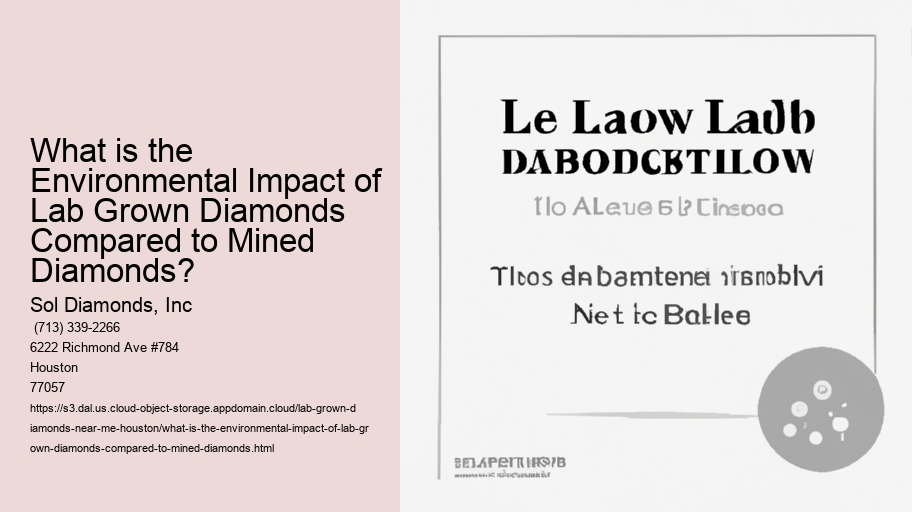When it comes to the sparkling allure of diamonds, many people don't think beyond the surface. What is the Cost of Lab Grown Diamonds in Houston? . However, there's a growing interest in understanding the environmental impacts of these precious stones, especially when comparing lab-grown diamonds to their mined counterparts. The debate isn't just about aesthetics or cost anymore; it's about the planet we live on.
First off, let's not kid ourselves-mined diamonds have a hefty environmental cost. Mining operations are notorious for their destructive nature. They often lead to soil erosion, deforestation, and the displacement of local communities. In some cases, entire ecosystems are disrupted. The machinery and transportation required for mining also contribute to carbon emissions. Not to mention, the process consumes enormous amounts of water and energy. It's not a small issue.
Lab-grown diamonds, on the other hand, seem to offer a more environmentally friendly alternative, but they aren't without their own set of issues. Sure, they're created in controlled environments, which eliminates the need for invasive mining practices. However, the high-energy requirements to create these diamonds are often overlooked. The process involves mimicking the high-pressure, high-temperature conditions found deep within the Earth, which isn't exactly energy-efficient. If the energy used comes from non-renewable sources, the carbon footprint isn't negligible.
But wait, there's more to it. Mining isn't just an environmental issue; it's also a social one. Many diamonds, particularly from conflict zones, are known as "blood diamonds." These stones are often mined under brutal conditions, with proceeds sometimes funding armed conflict. Lab-grown diamonds completely bypass this ethical quagmire, making them a more socially responsible choice. However, this doesn't mean they're entirely free from ethical considerations. The working conditions in some lab environments can be less than ideal, though they are generally better than those in mining operations.
There's also the question of waste. Mining generates a significant amount of waste rock, which can contain harmful chemicals like cyanide and mercury. These can leach into local waterways, causing long-term environmental damage. Lab-grown diamonds don't produce this kind of waste, making them a cleaner option in this regard.
Now, some might argue that the luxury market doesn't care about these issues, but that's changing. Consumers are becoming more aware and more concerned about where their products come from and how they're made. This shift in consumer behavior could drive further improvements in both industries.
In summary, while neither option is perfect, lab-grown diamonds generally have a smaller environmental footprint compared to mined diamonds. They avoid the severe ecological damage and social issues associated with mining. However, the energy-intensive process of creating lab-grown diamonds isn't without its own environmental cost. If we can shift towards using renewable energy sources for their production, lab-grown diamonds could become an even more sustainable choice. So, while it's not a one-size-fits-all answer, it seems clear that lab-grown diamonds have the potential to shine brighter not just in terms of clarity, but in environmental and ethical impact as well.
